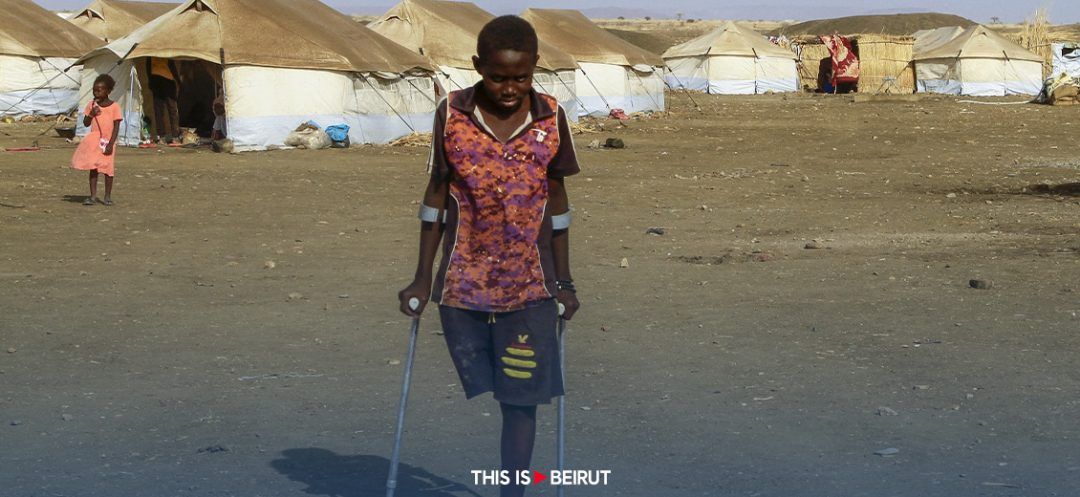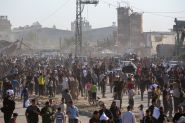
©AFP
Sudan has been brought to its knees by a war between the regular army and rival paramilitaries that has killed thousands of people and displaced 8.5 million more.
Here are the main developments in the fighting, which has brought the country of 48 million to the brink of famine.
Explosions rock the capital Khartoum on April 15, 2023, as war breaks out between the regular army of Sudan's de facto leader Abdel Fattah al-Burhan and the Rapid Support Forces (RSF) of his former deputy Mohamed Hamdan Daglo.
Tensions between the pair, who were behind the 2021 coup that ousted strongman leader Omar al-Bashir, had been building for weeks.
The fighting came after a deal on a return to civilian rule fell apart amid bickering over how to integrate the RSF into the regular army.
The RSF quickly took control of Khartoum airport, the presidential palace and other key sites.
Fighting also erupted in the western region of Darfur, which is still reeling from a major conflict that began in 2003 when Arab militias known as Janjaweed (which later became the RSF) were deployed by Khartoum to crush a rebellion by non-Arab minorities.
Foreign countries rushed to evacuate their nationals from Sudan.
The United States and Saudi Arabia negotiated a 72-hour truce, but it was quickly violated, like a series of further truce deals that followed.
In May, the army and the RSF took part in ceasefire talks brokered by the United States and Saudi Arabia in the Red Sea port city of Jeddah.
But the army walked out on May 31, accusing the RSF of failing to respect its truce commitments.
Its forces bombarded the paramilitaries' positions in Khartoum.
The United States announced on June 1 sanctions against businesses linked to both the army and paramilitaries, and restrictions on visas for officials from both warring parties.
The paramilitaries said that they seized the country's most important military complex in Khartoum.
In mid-June, the war claimed one of its most prominent victims – the governor of West Darfur state, Khamis Abdullah Abakar, who was captured and assassinated after criticizing the RSF in an interview with a Saudi TV channel.
The International Criminal Court opened a probe into alleged war crimes in Sudan, including alleged sexual and gender-based crimes.
In mid-August, the war spread to two new cities: El Fasher in North Darfur and El Fula in West Kordofan.
The UN said that famine stalked the whole of Sudan.
In September, the army clashed with tribal militiamen in the strategic Red Sea city of Port Sudan, where the government, which is loyal to the army, took refuge.
Peace talks sponsored by the United States and Saudi Arabia resumed on October 26 in Jeddah, but there was no agreement on a ceasefire.
The paramilitaries overran central Al-Jazira state, which was a relatively safe haven until then.
Sudan expelled diplomats from the United Arab Emirates over accusations that the wealthy Gulf country was providing military aid to the RSF.
Sudan quit the east African bloc IGAD in January after it invited Burhan's rival, paramilitary chief Mohamed Hamdan Daglo, to a gathering.
The number of people uprooted by the war reached nearly eight million, with more than 1.5 million fleeing to Chad and other neighboring countries, according to UN figures.
The warring parties agreed to meet for talks on enabling the delivery of desperately needed aid.
The United States said that it hopes the talks will take place after the Muslim fasting month of Ramadan, which ended earlier this week.
With AFP
Here are the main developments in the fighting, which has brought the country of 48 million to the brink of famine.
April 2023: Fighting Erupts
Explosions rock the capital Khartoum on April 15, 2023, as war breaks out between the regular army of Sudan's de facto leader Abdel Fattah al-Burhan and the Rapid Support Forces (RSF) of his former deputy Mohamed Hamdan Daglo.
Tensions between the pair, who were behind the 2021 coup that ousted strongman leader Omar al-Bashir, had been building for weeks.
The fighting came after a deal on a return to civilian rule fell apart amid bickering over how to integrate the RSF into the regular army.
The RSF quickly took control of Khartoum airport, the presidential palace and other key sites.
Fighting also erupted in the western region of Darfur, which is still reeling from a major conflict that began in 2003 when Arab militias known as Janjaweed (which later became the RSF) were deployed by Khartoum to crush a rebellion by non-Arab minorities.
Foreign countries rushed to evacuate their nationals from Sudan.
The United States and Saudi Arabia negotiated a 72-hour truce, but it was quickly violated, like a series of further truce deals that followed.
May: Talks Fall Apart
In May, the army and the RSF took part in ceasefire talks brokered by the United States and Saudi Arabia in the Red Sea port city of Jeddah.
But the army walked out on May 31, accusing the RSF of failing to respect its truce commitments.
Its forces bombarded the paramilitaries' positions in Khartoum.
June: US Sanctions
The United States announced on June 1 sanctions against businesses linked to both the army and paramilitaries, and restrictions on visas for officials from both warring parties.
The paramilitaries said that they seized the country's most important military complex in Khartoum.
In mid-June, the war claimed one of its most prominent victims – the governor of West Darfur state, Khamis Abdullah Abakar, who was captured and assassinated after criticizing the RSF in an interview with a Saudi TV channel.
July: War Crimes Probe
The International Criminal Court opened a probe into alleged war crimes in Sudan, including alleged sexual and gender-based crimes.
In mid-August, the war spread to two new cities: El Fasher in North Darfur and El Fula in West Kordofan.
The UN said that famine stalked the whole of Sudan.
September: Unrest in Port Sudan
In September, the army clashed with tribal militiamen in the strategic Red Sea city of Port Sudan, where the government, which is loyal to the army, took refuge.
Peace talks sponsored by the United States and Saudi Arabia resumed on October 26 in Jeddah, but there was no agreement on a ceasefire.
December: Gains for Paramilitaries
The paramilitaries overran central Al-Jazira state, which was a relatively safe haven until then.
Sudan expelled diplomats from the United Arab Emirates over accusations that the wealthy Gulf country was providing military aid to the RSF.
January: Sudan Quits Regional Bloc
Sudan quit the east African bloc IGAD in January after it invited Burhan's rival, paramilitary chief Mohamed Hamdan Daglo, to a gathering.
The number of people uprooted by the war reached nearly eight million, with more than 1.5 million fleeing to Chad and other neighboring countries, according to UN figures.
February: Agreement to Hold Talks
The warring parties agreed to meet for talks on enabling the delivery of desperately needed aid.
The United States said that it hopes the talks will take place after the Muslim fasting month of Ramadan, which ended earlier this week.
With AFP
Read more



Comments